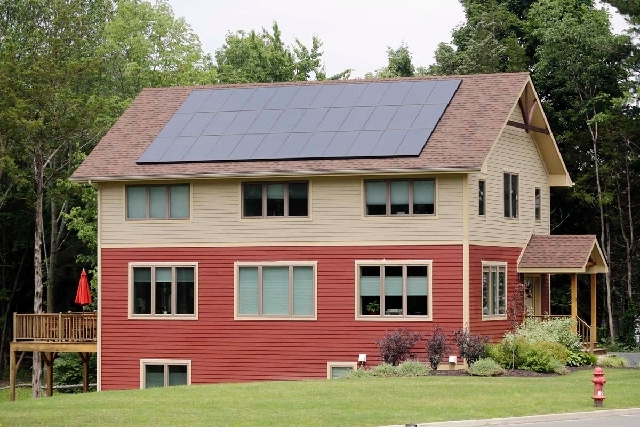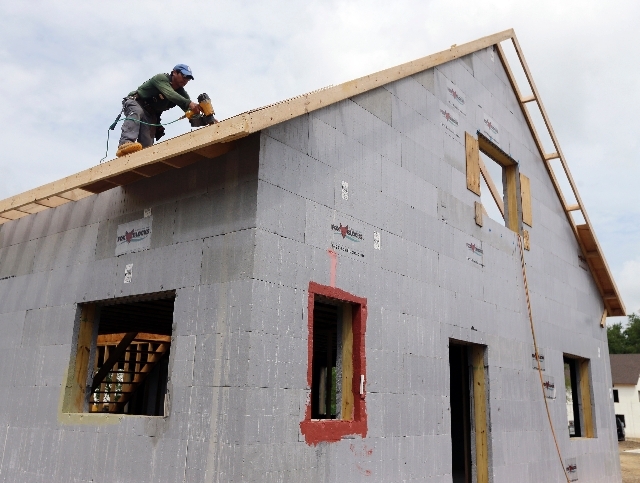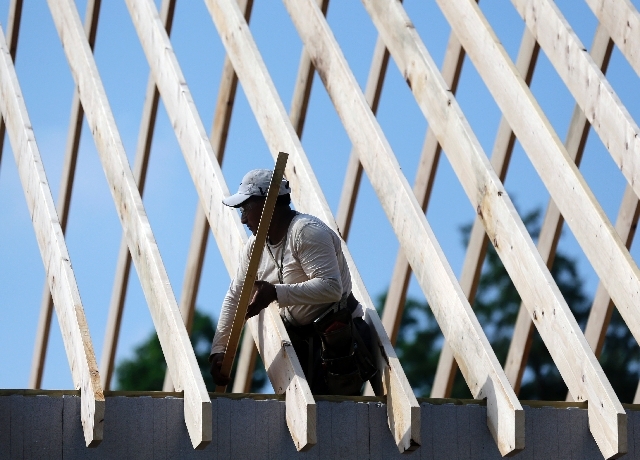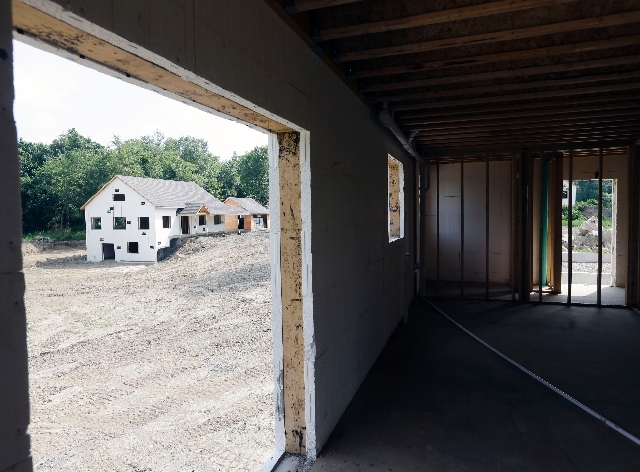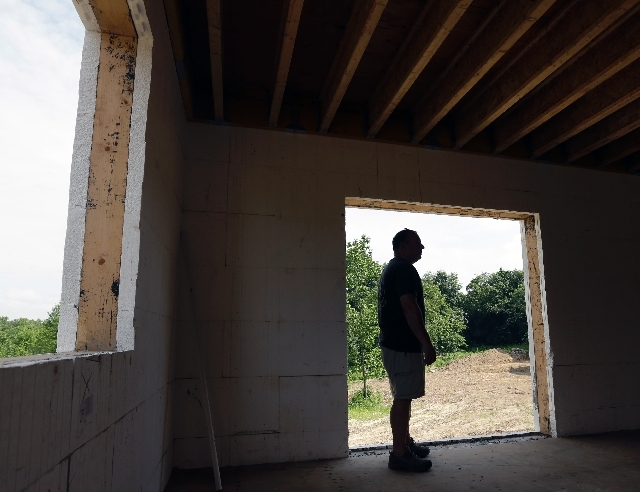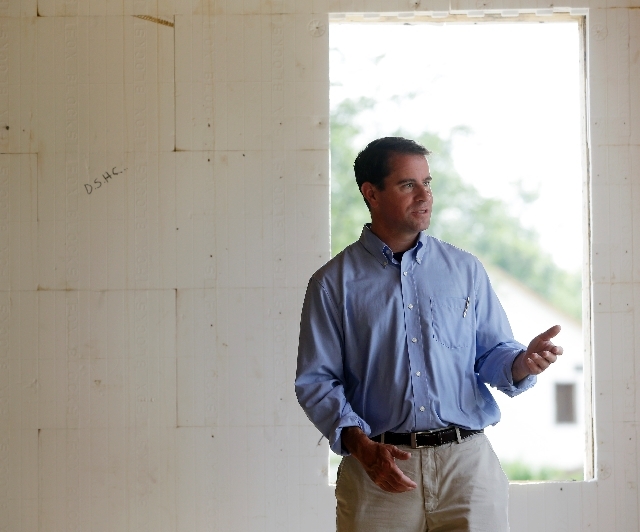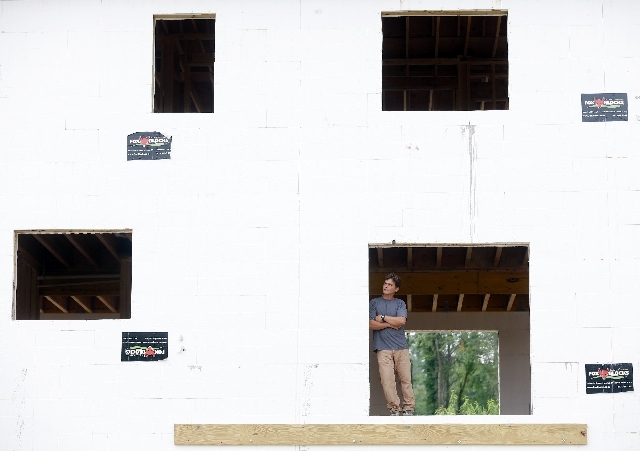Welcome to a ‘zero-net energy’ neighborhood: airtight, expensive
NEW PALTZ, N.Y. — Homes being built in this Hudson Valley cul-de-sac offer prospective buyers wooded lots, pretty views and — oh yes — the promise of thumbing your nose at the power utility.
These “zero-net energy” homes will feature thick walls, solar panels and geothermal heating and cooling systems, meaning families should be able to generate more energy over a year than they consume. These homes under construction 70 miles north of New York City have costly green features. But the builders believe they are in tune with consumers increasingly concerned about the environment and fuel costs.
And there are home buyers here and around the nation who are willing to pay more for savings down the line.
“I don’t have to worry about $6,000 worth of utilities to run a house,” said Gil Lobell, a current zero-net home dweller moving his family into a larger house in the new development. “I can use that money for other things, so we go on vacations because I’m not spending money on utilities. I don’t worry about oil bills. I don’t worry about electric bills. I don’t worry about gas bills.”
Zero-net homes require two things. They generate energy, typically solar, and they are designed in a way to reduce energy consumption through the use of energy-efficient appliances and insulation. Lots of insulation, in the case of these homes.
Exterior walls of the nine homes being constructed here by Greenhill Contracting Inc. include a six-inch layer of poured, reinforced concrete sandwiched by about two-and-a half-inches of polystyrene (the stuff from which coffee cups are made). The castle-thick walls, combined with heavily insulated rafters above, an insulated concrete slab below and triple-paned windows create a “building envelope” that makes each house practically as airtight as a thermos — albeit with ventilation.
“The building envelope is the most important part of the puzzle,” said John Wright of Hudson Solar, which is working with Greenhill. “By sealing the envelope and controlling the ventilation, we can control the heating and cooling costs.”
Interior temperatures are kept comfortable year-round with a geothermal heating and cooling system that takes advantage of the steady temperature deep below ground. This is the same set-up installed in Lobell’s current home in New Paltz. In the middle of a recent sweltering summer day, the home was comfortably cool.
Zero-net homes are not new, but zero-net developments remain a niche. A big reason is the upfront costs.
Three-bedroom houses in this development start at $399,000. Each house has a $39,000 geothermal system and $29,000 solar system. Wright said the upfront costs are mitigated in New York by federal and state tax credits and rebates that bring combined costs down to $32,600. But just as it is for car buyers who pony up more for a hybrid — the real selling point is the long-term savings in energy costs.
“Any homeowner that goes out and spends $100,000 less than my zero-energy homes ... is going to be spending more at the end of the year,” said Greenhill president Anthony Aebi, who says his homes are competitively priced with new construction.
Lobell’s latest electric bill reads “Electricity Used (kWh) 0.” Basic service charges and taxes made up the entire two-month bill of $49.51. The connection to the grid is necessary for those gray days when the juice is needed. But he pushes electricity back on the grid when it’s sunny, earning credit for what he consumes later. He figures he saves about $5,500 a year in utility costs compared to his previous house.
The University of California, Davis broke ground in 2009 on what they believe will be the largest zero-net energy community in the nation. They have completed 507 apartment units for students and faculty and more are being built. Eventually, private development on university land will include single-family homes.
Top home builders like Arizona-based Meritage Homes Corp. and California-based Shea Homes both market zero-net homes.
Meritage has a net-zero option — adding solar systems to already tightly-built homes — at all its communities from Orlando to San Francisco, said C.R. Herro, the company’s vice president for environmental affairs. Shea Homes has sold more than 1,000 “SheaXero” homes in four western states and Florida. Marketed to baby boomers, they are only net-zero for electric since they have gas heat, but it works for Sandy Van Emmerik, who moved into a Shea home in San Tan Valley, Ariz., last October.
She said she still gets to run the air conditioner around the clock.
“And I still have never paid more than $18 and some change,” Van Emmerik said. “Actually, the last couple of months I had a credit.”



